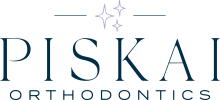Whether you have mildly crooked teeth or a more complex bite issue, orthodontic treatment can help you get the healthier, straighter smile of your dreams!

Personalized Care for Your Smile Concerns
The reason our practice specializes in individualized care using custom treatments is because every patient’s smile is unique. Your orthodontic issues won’t be exactly the same as anyone else’s and you could even have a combination of problems. However, in general, these are the most common types of malocclusion we treat at our practice.

Crowding
When the jaw is too small to fit all of the teeth, the teeth will move in the wrong directions as they try to squeeze in. They might stick out, overlap, or twist. Crowding can be caused by losing baby teeth too early or an imbalance in the tooth-to-jaw-size ratio, which is genetic.
Crowded, crooked teeth are difficult to properly brush and floss, increasing your risk of tooth decay and gum disease. Crowding can also lead to uneven wear of the enamel and leave any protruding teeth at risk for injury.
Treatment
The good news is both LightForce braces and Invisalign® can fix crowded teeth by creating ideal spacing and alignment. If a baby tooth is lost early due to decay or injury, a dental space maintainer could help prevent crowding altogether.
Spacing
Spacing is the opposite of crowding. It’s when there’s too much room in the jaw and you have spaces or gaps between two or more teeth. Spacing can be caused by genetics, oral habits like thumb sucking, and tooth loss.
Food and plaque can get caught in the spaces, making you prone to tooth decay and gum disease. Spacing can also cause bone loss in the jaw.
Treatment
LightForce braces and Invisalign can close gaps between the teeth, giving you a perfectly spaced, healthy smile.
Overjet
When the top front teeth stick out, or protrude, too far in front of the bottom teeth, it’s known as overjet. Overjet teeth, sometimes referred to as “buck teeth,” may be genetic or caused by oral habits, including tongue thrust, prolonged pacifier use, and thumb sucking.
Since overjet teeth stick out, they’re more likely to be damaged if you suffer facial trauma. The condition can also cause jaw pain and uneven wear of the enamel.
Treatment
Dr. Piskai can fix overjet teeth with braces or Invisalign.
Overbite (Deep Bite)
Overbite refers to the degree that the top front teeth vertically overlap the bottom teeth. Some overlap is normal and actually ideal. but an excessive overbite, also called a deep bite, is a problem. In severe cases, the bottom teeth can bite into the roof of the mouth.
An excessive overbite is most commonly genetic; however, it can also be caused by teeth grinding and clenching (bruxism) or a missing lower tooth. If not treated, a deep bite may lead to an increased risk of tooth decay and gum disease, problems with chewing, excessive wear of the enamel, and jaw and temporomandibular joint (TMJ) pain. Certain types of overbites are also tied to obstructive sleep apnea.
Treatment
An excessive overbite can sometimes be fixed using LightForce braces or Invisalign. However, when an overbite is moderate to severe and skeletal in nature (i.e., related to the size or position of the jaw), early intervention using certain orthodontic appliances may be needed. This can help kids avoid corrective jaw surgery later in life.
Underbite
When a patient has an underbite, their lower jaw extends out further than their upper jaw, causing their bottom teeth to sit in front of their top teeth. Most commonly, an underbite is genetic and caused by the upper and lower jaw growing at different rates.
An untreated underbite can cause difficulty chewing, breathing, and speaking properly. It also strains the jaw joints and chewing muscles, potentially causing pain and TMJ dysfunction.
Treatment
Identifying and treating an underbite while a patient is still growing is important. In a lot of cases, starting phase 1 orthodontic treatment in childhood will help patients get the best results and avoid the need for surgical correction in adulthood.
Crossbite
A crossbite is when one or more of the bottom teeth are in front of the top teeth. When it involves teeth towards the front of the mouth, it’s called an anterior crossbite, or front crossbite. When the teeth in the back of the mouth are affected, it’s known as a posterior crossbite, or back crossbite.
A crossbite can be caused by genetics, habits like prolonged thumb sucking, or trauma. It can lead to problems biting and chewing, jaw and TMJ pain, and uneven wear of the enamel. Patients often compensate by shifting their jaw to the side, so crossbites can also cause permanent changes to the facial structure.
Treatment
Treatment will depend on the type of crossbite (anterior crossbite or posterior crossbite), the severity, and whether the problem is skeletal or dental. Some crossbites can be fixed with Invisalign or LightForce braces. In certain instances, however, phase 1 orthodontic treatment using a palatal expander could be necessary.
Open Bite
A patient is said to have an open bite when the top and bottom front teeth don’t meet when biting down. Open bites can be the result of oral habits like tongue thrust or aggressive, prolonged thumb sucking.
Having an open bite makes it hard to chew and bite into food. It also impacts speech and can cause jaw pain and premature wear of the teeth that do touch.
Treatment
An open bite often responds well to braces or Invisalign. Occasionally, if the condition interferes with a young patient’s ability to eat and speak, early interceptive treatment may be recommended.





